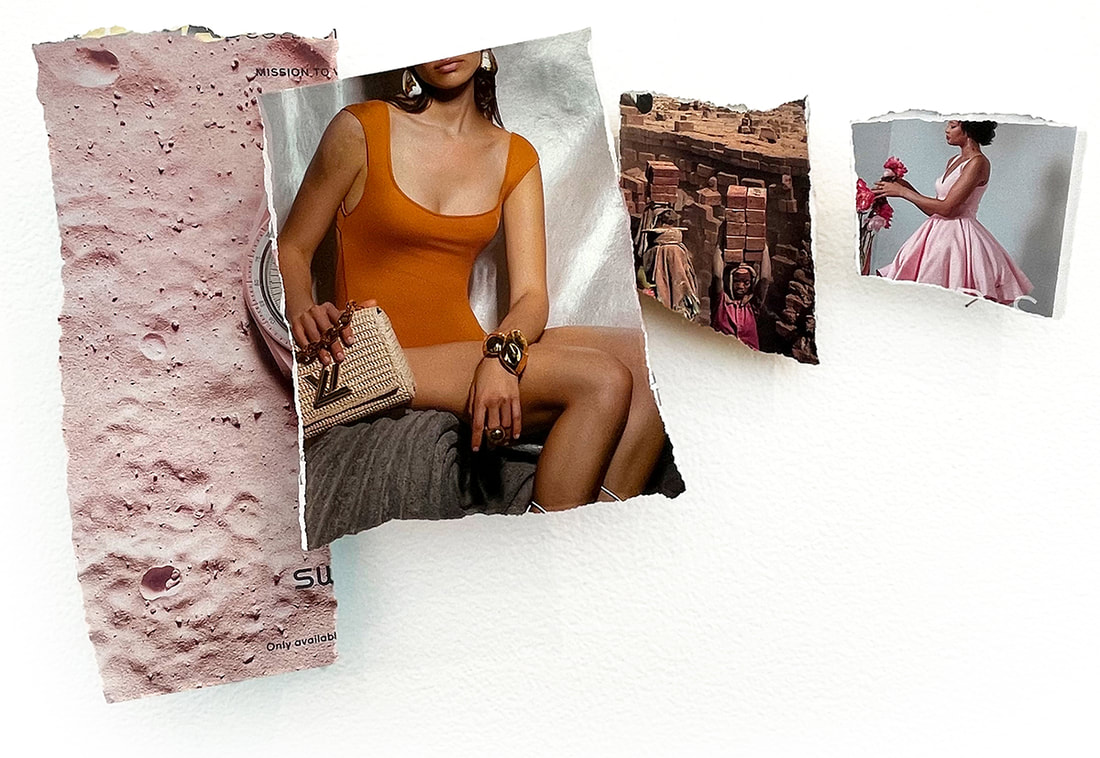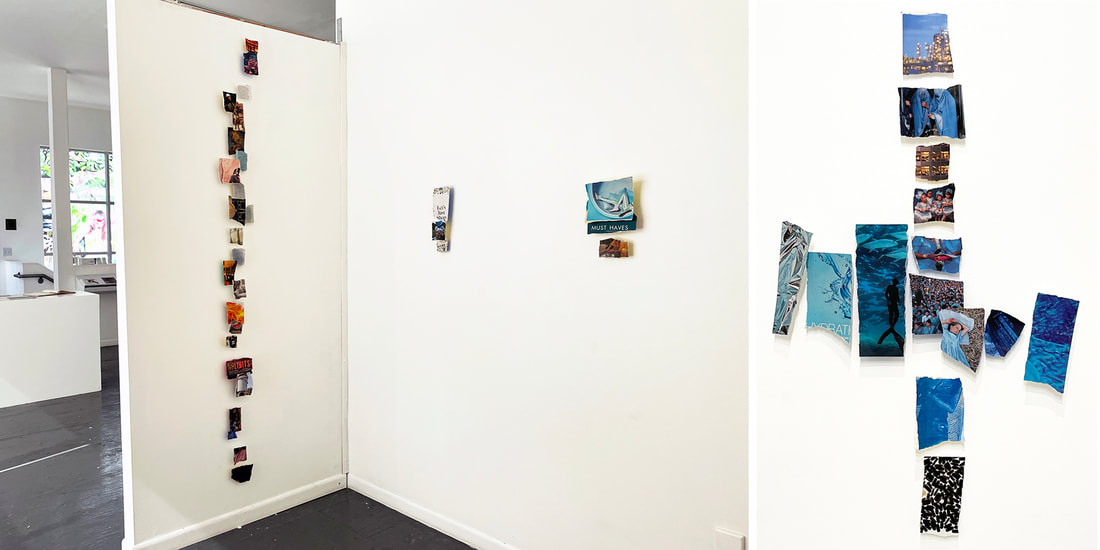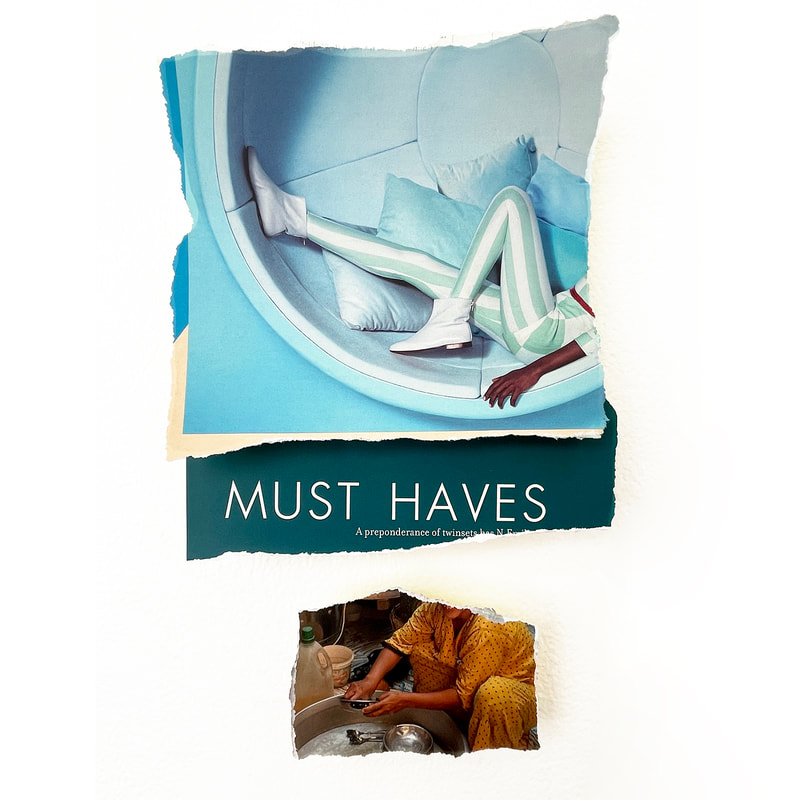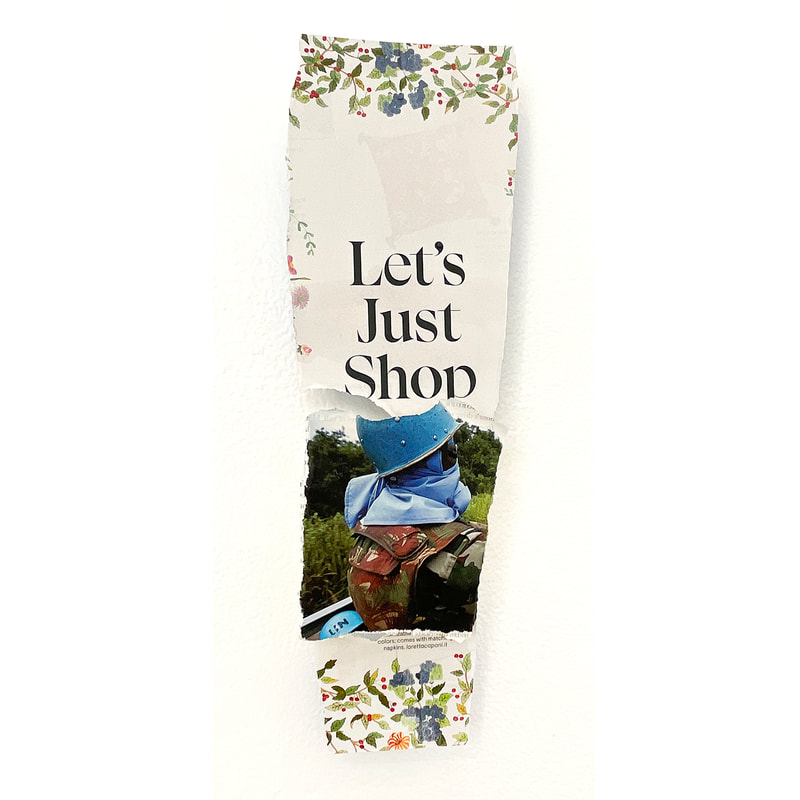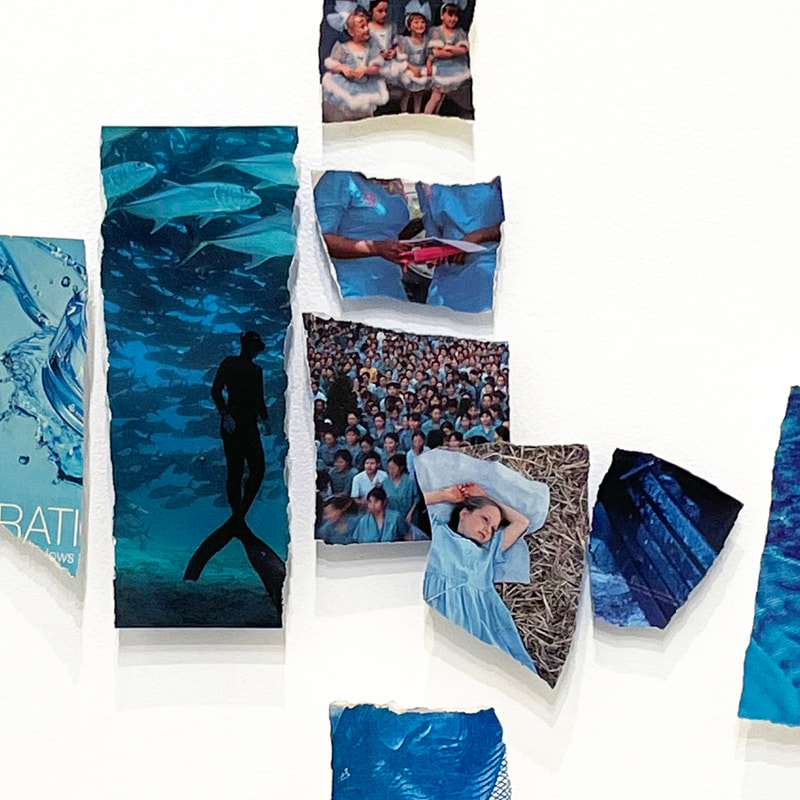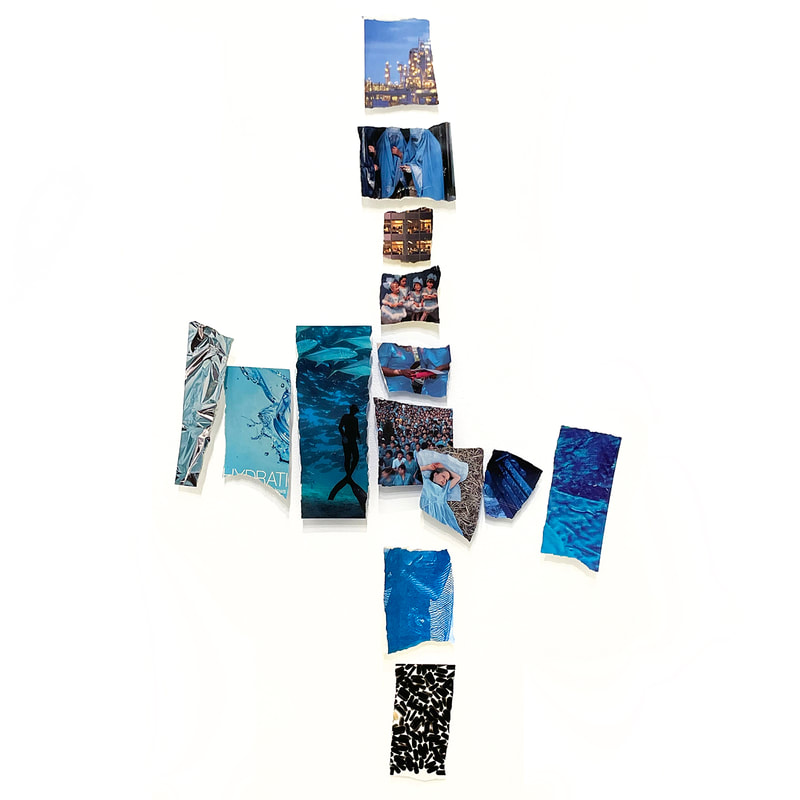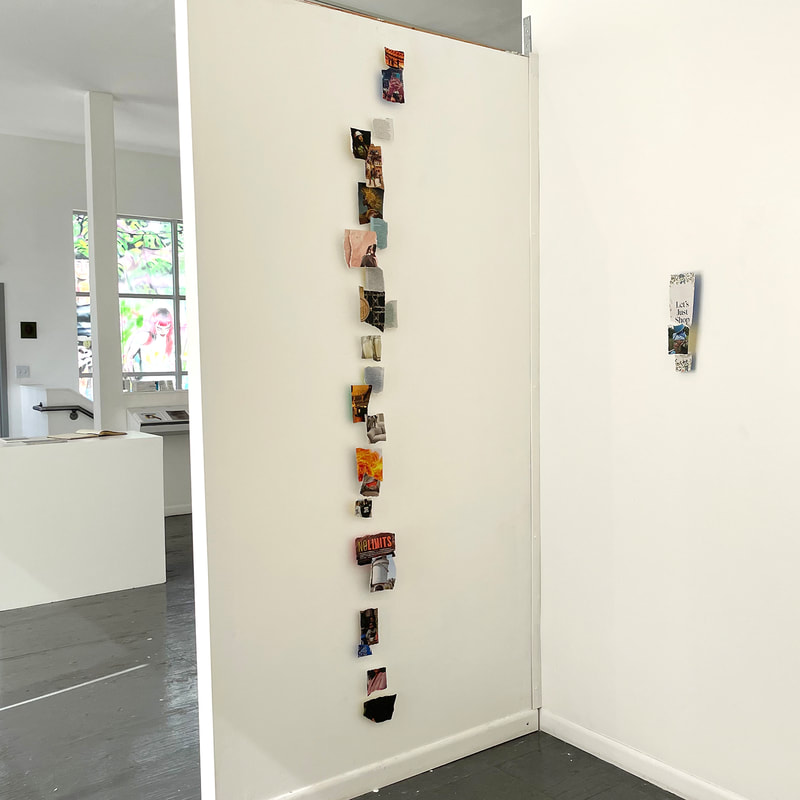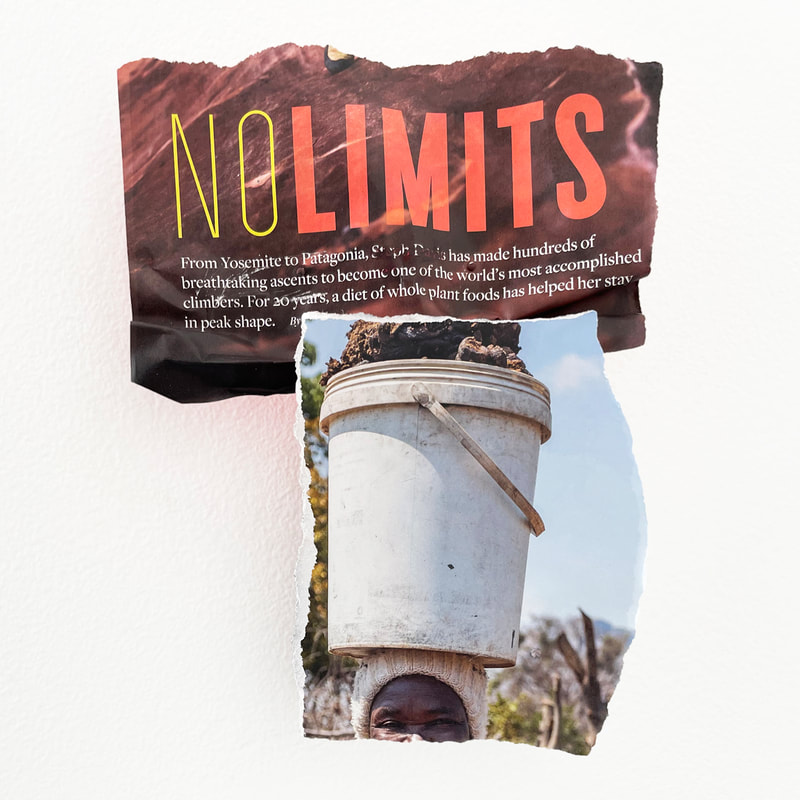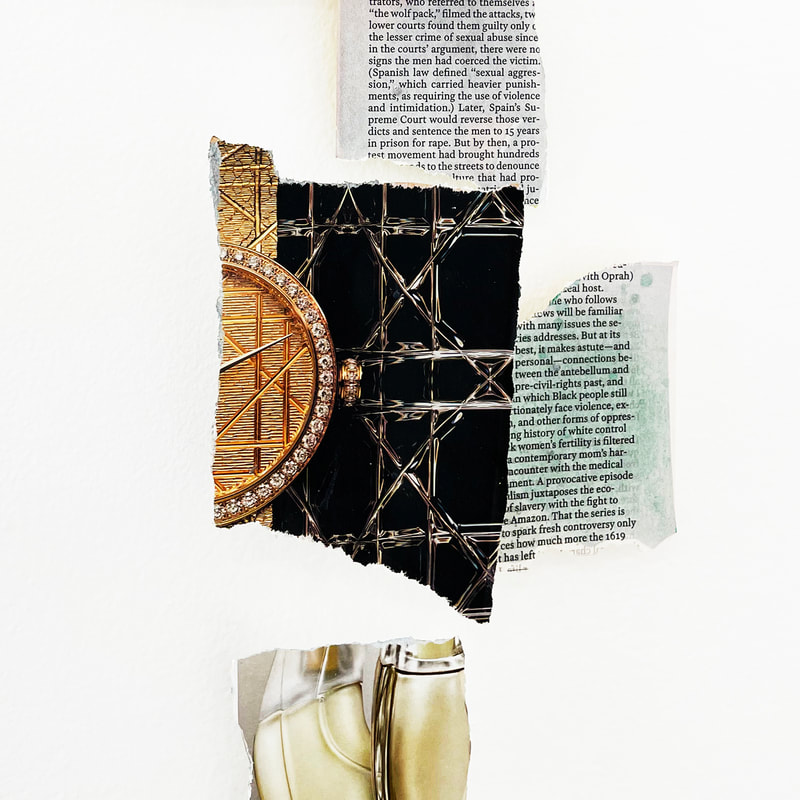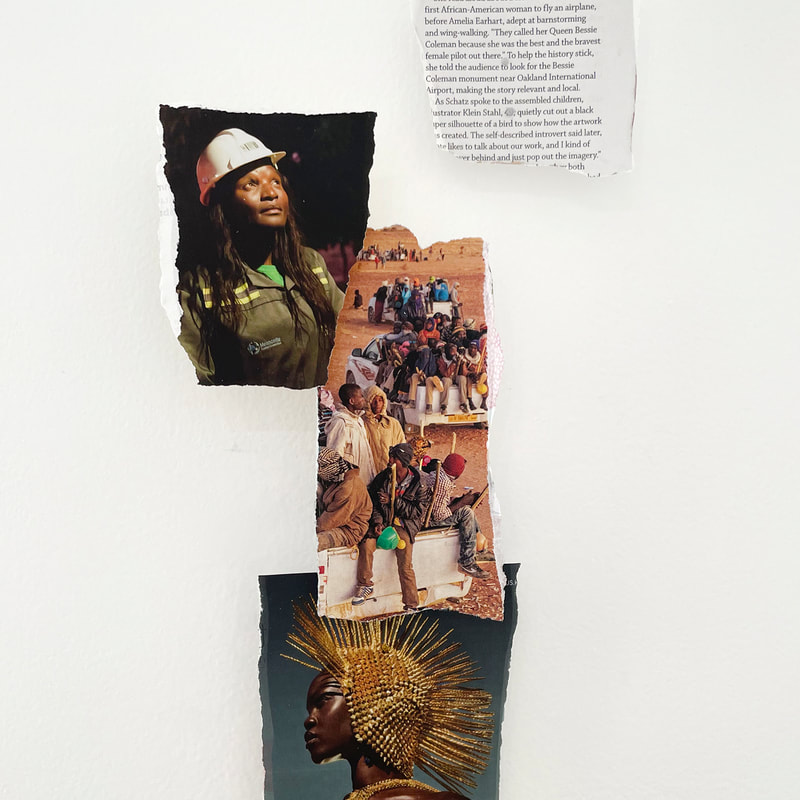Small Space Solo Exhibition:
On view in the Small Space at Transmission Gallery, torn paper collage work of a free nature by TaVee McAllister Lee.
Detergent, diamond, and pharmaceutical advertisements frame news of catastrophe, devastation, and the abandonment of principles, alongside motivational stories, and aspirational messaging in a constant white noise of information. Together they collide here in free form arrangements of paper fragments, pinned to the wall in relationship to each other exactly so, a poem sparingly written. Over time, the presence of delicately colored shadows may become evident.
Altogether the process of creating the work relies on a tremendous amount of time, training and practice, the artist’s and the efforts of the publishers, reporters, writers, photographers, and graphic designers, those working menial labor in the paper mills, those who make the ink and those who prep the print run, the distributers, and mail carriers, all the individuals along the way that touched or influenced each little bit of paper. The entwined power of the editorial, marketing, and consumer interests involved influence and direct the content of the source material. All that is obliquely present in the work, though often unremarked when considering the delicate and tenuous nature of these fragmentary installations.
The work comments variably on concepts of class, connection, technology, consumerism, value, and presence.
Historically whitewash was a coating with mild anti-bacterial properties applied to the interior of dairies, and rural homes, less expensive than paint. More broadly, whitewashing refers to the suppression or "glossing over" of potentially damaging or unwelcome information. Also, it refers to exonerating unjust, improper, or criminal action by means of a perfunctory investigation or through biased presentation of data. Most recently, whitewash is a term applied to portraying events in a way that increases the prominence, relevance, or impact of white people and minimizes or misrepresents that of nonwhite people.
Detergent, diamond, and pharmaceutical advertisements frame news of catastrophe, devastation, and the abandonment of principles, alongside motivational stories, and aspirational messaging in a constant white noise of information. Together they collide here in free form arrangements of paper fragments, pinned to the wall in relationship to each other exactly so, a poem sparingly written. Over time, the presence of delicately colored shadows may become evident.
Altogether the process of creating the work relies on a tremendous amount of time, training and practice, the artist’s and the efforts of the publishers, reporters, writers, photographers, and graphic designers, those working menial labor in the paper mills, those who make the ink and those who prep the print run, the distributers, and mail carriers, all the individuals along the way that touched or influenced each little bit of paper. The entwined power of the editorial, marketing, and consumer interests involved influence and direct the content of the source material. All that is obliquely present in the work, though often unremarked when considering the delicate and tenuous nature of these fragmentary installations.
The work comments variably on concepts of class, connection, technology, consumerism, value, and presence.
Historically whitewash was a coating with mild anti-bacterial properties applied to the interior of dairies, and rural homes, less expensive than paint. More broadly, whitewashing refers to the suppression or "glossing over" of potentially damaging or unwelcome information. Also, it refers to exonerating unjust, improper, or criminal action by means of a perfunctory investigation or through biased presentation of data. Most recently, whitewash is a term applied to portraying events in a way that increases the prominence, relevance, or impact of white people and minimizes or misrepresents that of nonwhite people.
